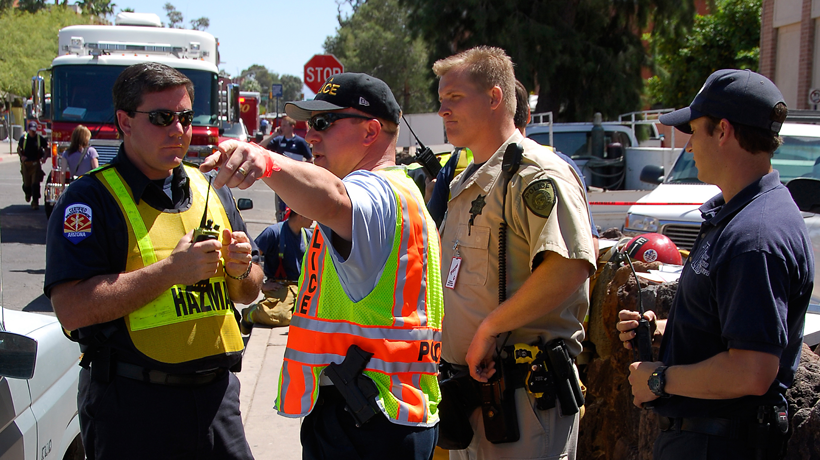When companies and communities begin addressing issues such as urbanization, aging infrastructure, hostile forces, resource scarcity and population growth, proactive steps must be taken to modernize approaches for tackling these issues and their effects. Whether you work in utilities, public safety, transportation, energy, armed forces, local government, manufacturing or services, we are all charged with the social and fiduciary responsibility to positively affect what happens to multiple stakeholders in our backyard.
A step in the right direction is working to continually improve our emergency planning and operations. It is not only good practice and management; it’s good citizenship. It is a proactive step that we can shape our future on. And technology plays a huge role for making this achievable and sustainable.
Early-warning systems can save lives and protect crucial infrastructure. Typically, the earlier communities are alerted, the better the outcomes are. An excerpt from the published United Nations Secretariat of the International Strategy for Disaster Reduction (UNISDR) report states: “Early warning systems can save many lives as long as they are centered on the needs of the people. Effective systems are characterized by education and training for people at risk which are well harmonized with monitoring tools, warning systems as well as dissemination strategies.”
The reality is that many of the systems that are employed today are reactive, insofar as alerting stakeholders of an impending event. However, there is a shift from applying reactive (alert) systems to a holistic one. In the latter approach, total stations and real-time monitoring systems are used to continually analyze the state and threat level of a particular infrastructure condition, large group event, or local crisis scenario. This health check type of system should ideally be coupled with response mechanisms that automate emergency action plans that include internal and external multi-agency stakeholders, should threat levels surpass predetermined thresholds. In short, the use of a modern interface (Hexagon H2O Dashboard) that brings together clear, usable data to a command center is vital to emergency operations.
As organizations upgrade their technology for better change detection and event observation, the need to have an effective response plan is essential. To suppress the occurrence of an emergency or to prevent one from becoming insurmountable, effective multi-agency coordination and communication must be in place. Intergraph Canada’s Planning and Response application is designed to specifically handle this. It is a web-based solution for managing planned and unplanned events. Emergency operations managers use this tool to prepare, coordinate, communicate, document, and analyze emergency events across jurisdictions and agencies. Being web-based and modular, the solution is entirely scalable and field-compliant for proper intelligence dissemination.
This brings me to my point: Employing a comprehensive monitoring system that integrates into an accessible planning and response solution demonstrates prudent governance in mitigating risks that are ever-present in communities. Only by embracing the capacity that technology affords us, do we become responsible citizens of the future. Below are some steps your organization should consider when modernizing its approach to emergency management.
1. Secure and Monitor
Do you have the appropriate technology to capture and monitor events? Are these being fed into a common operating picture? There is an impressive array of technology and solutions in the market that can deliver the intelligence you need. Assess your risk tolerance and agree on the limits to your threshold to action.
2. Prepare and Respond
If your involvement is to report on events, be prepared to deliver information in the format that is required by your stakeholders, so that it can be easily digested and understood. If you are responding to an emergency, be sure you have an effective way to notify participating agencies. Seconds count. The faster everyone is mobilized, the better. Automate your lines of authority and approval, so there is no confusion as to who’s in charge.
3. Operate and Maintain
Ensure confidence in your emergency operations. If there is a soft spot, make that a priority area for improvement. Continually survey and assess your procedures. Train, train, and train some more. Be bullish on information management and sharing. Commit to regularly updating your operations and regularly meeting with your counterparts in other agencies and jurisdictions.
If you would like to learn more, join us at one of our upcoming Emergency Management Roadshows. These two hour complimentary session will be led by our industry experts and will discuss all things of the Intergraph Planning & Response.
















